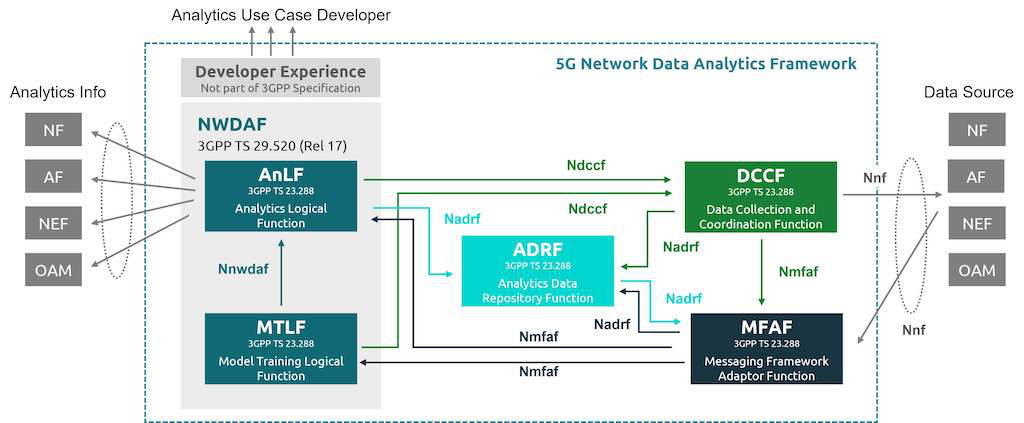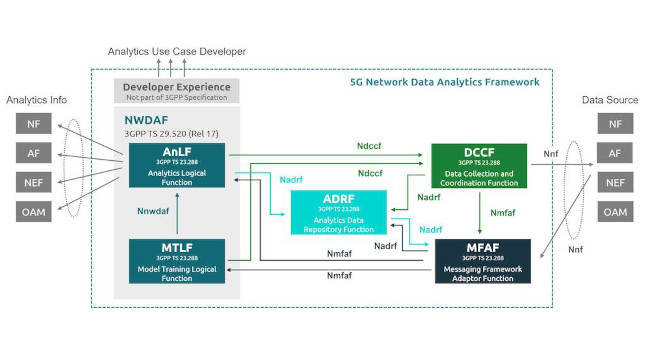How AI and machine learning can drive sustainable 5G
Future networks have the potential to reduce the environmental impact of industries that consume high levels of energy, but the industry needs a holistic energy saving solution to maximize the benefits and create real impact.
Learning Objectives
- Artificial intelligence (AI) and machine learning (ML)’s ability to gather and learn information will play a key role in sustainable 5G.
- 5G networks have five energy-saving pillars uses can take advantage of to reduce costs and improve efficiency.
- The reconfigurability of SDR platforms allows new IIoT protocols and algorithms to be implemented by changing the software.
Industrial AI, ML, 5G insights
- 5G infrastructure is set to explode, but it needs to be sustainable so the benefits are not offset by the costs.
- 5G connectivity could save over 250 million tons of CO2 emissions worldwide by 2030 because the networks will drive more users to fossil fuel alternatives. Artificial intelligence and machine learning are helping.
For organizations looking to achieve net zero and meet their climate targets, connectivity will be key. However, as data usage is set to explode – particularly with the development of consumer and corporate 5G networks – it’s vital the infrastructure the future depends on is built sustainably, and the benefits it brings are not offset by its carbon cost.
Today, the telecommunications (telecoms) industry accounts for a sizable 3% to 4% of global carbon dioxide (CO2) emissions – double that of civil aviation. This is only the tip of the iceberg, with global data traffic expected to swell by 60% each year, making urgent interventions a necessity to ensure the environmental cost of supply chains, operations and last mile delivery do not spiral out of control. In extreme instances, energy demand is skyrocketing. For instance, Greenpeace found 5G is one of the major drivers behind an enormous increase in electricity demand in China – forecast to grow by 289% by 2050 – and annual power consumption from next-gen connectivity could swell by 488% by 2035. And 5G’s high energy consumption is worrying industries that plan to harness its capabilities.
A Capgemini Research Institute report in 2021 on the 5G industrial revolution evaluated 1,000 organizations using 5G. The researchers discovered slightly more than half (51%) were worried about the adverse environmental impact of 5G and 67% revealed that they would take the sustainability credentials of operators, vendors, and suppliers into account for their 5G strategy.
Optimizing energy for 5G
While there are environmental worries, 5G’s design makes it possible to sustainably transform industries. According to a recent report from Mobile UK, 5G connectivity could save more than 250 million tons of CO2 emissions worldwide by 2030 because the networks will accelerate the move to fossil fuel alternatives like wind and solar.
The International Telecommunication Union (ITU) has recognized the need for sustainable 5G, publishing guidelines to lower greenhouse gas emissions in telecoms with a suggested target of net zero by 2060. Some major carriers in the U.S. are going even further and committing to being carbon neutral by 2035, while some network providers are seeking a reduction of greenhouse gas emissions by 95% by 2025.
These targets are not easy to achieve. While some energy optimization solutions are available on today’s market, the complex web of intermingling variables within modern supply chains means they are not sufficiently holistic. To build the sustainable networks of the future, the industry will need to take a multi-pronged approach, one that combines innovations in hardware with the latest advances in software.
Peak performing networks enabled by AI, ML
For any enterprise, what can’t be measured also can’t be improved, meaning data-driven operations will be critical in helping to create and optimize supply chains that are more energy efficient. These supply chains also will need to be powered by continuous software optimization to ensure networks are performing at their best and most environmentally friendly.
The tools most trusted by operators are artificial intelligence (AI) and machine learning (ML) driven solutions, partially because – unlike hardware-based options such as batteries and cooling systems – AI is scalable, cost effective, and offers a favorable return on investment. In fact, GSMA Intelligence reports the vast majority of operators (83%) place energy efficiency as crucial to their future network transformation strategies; and 78% recognize AI-driven solutions will also be vital to those strategies.
However, to date, AI- and ML-driven approaches have largely focused on optimization for radio access networks (RANs) – the connection points that join end-user devices to networks. While an important area of focus, RAN optimization is just the beginning. Only end-to-end energy management can achieve the efficiency or sustainability gains necessary for the demands of future networks.
Making AI go further, closed-loop automation
The telecoms industry is collaborating to develop an intelligent networking product to drive 5G sustainability with AI and ML. The goal is to build a sustainable ecosystem that covers the entirety of network deployments – a holistic approach that takes advantage of closed-loop automation to reduce energy consumption on the 5G core network.
Entitled “Project Bose,” this approach brings together cutting-edge advances from telecoms, data science and environmental science to develop more sustainable networks from 5G onward without sacrificing the quality of experience.
Underpinning Project Bose is an AI framework with a 5G network data analytics function (NWDAF), which is designed to provide holistic insights across the 5G network infrastructure. It will drive and engineer use cases across the ecosystem, from service assurance to load balancing and data monetization. To achieve this, Project Bose derives analytic insights from user equipment mobility management, as well as network function load conditions data from the 3rd Generation Partnership Project (3GPP) – and NWDAF.

The five energy levers behind the NWDAF framework assist in trimming energy use at all layers of the 5G network. Courtesy: Capgemini
Five energy-saving pillars for 5G networks
There are five crucial energy-saving pillars for 5G networks, which are all foundational to the project and will be core to emission reduction in telecoms. While still in the testing phase, operators can find cost savings by applying software to these principles:
-
Power savings can be achieved in RAN and connected devices by optimizing paging decisions and streamlining the paging request load. Rather than broadcasting a paging request widely and wasting energy, Directional UE Paging uses mobility analytics information to predict user locations and send requests in that direction, where demand is most likely to be.
-
Energy savings can be made by optimizing for Internet of Things (IoT) devices. There may be as many as 14.4 billion IoT devices in 2022 alone, with some forecasts suggesting over 100 billion by 2050. A sizable amount of these devices will be low-energy devices are only required to send a small amount of data, for example, a smart waste receptacle that only alerts the waste organization when they are almost full. Because there is no need for ongoing data transmission, these kinds of devices would benefit from mobile initiated connection only (MICO) modes – where parameters are set by mobility analytics information, and they only connect to networks as needed.
-
On the server side, load prediction information can feed into an energy-aware network function placement system, allowing an orchestrator to optimize energy consumption in servers hosting workloads.
-
At the user plane function layer, intelligent load balancing based on network function load prediction data helps to reduce energy consumption and improve experience quality for the end user.
-
CPU tuning can save power by adapting core frequencies to given loads, while unused cores can be placed in sleep states when idle.
Together, the five energy levers behind the NWDAF framework assist in trimming energy use at all layers of the network. Based on laboratory testing, there has been prominent success – with energy reductions reaching 18%, and savings validated across various deployments, traffic scenarios, and time intervals. Specifically, the energy savings equated to 14% saving in CO2 emissions – but also cut operational expenditure by around 12%, offering enticing cost savings for businesses that strive to green their operations with software.
These early results are promising, but there is more to do. Manufacturers can further strengthen energy optimization by utilizing additional metrics related to slice level quality assurance, packet processing, memory fault monitoring, and other analytics information from a NWDAF framework. What’s further, there are plans to integrate Project Bose with the software-defined open radio access network (ORAN) and RAN intelligent controller (RIC), to maximize energy savings on 5G networks.
By redoubling the focus on data and ML, operators and their partners can take this opportunity to build the robust networks the industry requires to power the future of networks. Operators can meet climate goals while saving costs thanks to AI and ML. With the current economic turbulence and the climate crisis, this movement can’t come soon enough.
Subhankar Pal is the global research & innovation leader for future of networks at Capgemini Engineering. Edited by Chris Vavra, web content manager, Control Engineering, CFE Media and Technology, cvavra@cfemedia.com.
MORE ANSWERS
Keywords: machine learning, artificial intelligence, 5G connectivity
ONLINE
The whitepaper available from Capgemini on Project Bose provides further details on the approach, solution and the results.
Here’s Control Engineering 5G wireless power article.
CONSIDER THIS
How can 5G improve communication in your facility?
Do you have experience and expertise with the topics mentioned in this content? You should consider contributing to our CFE Media editorial team and getting the recognition you and your company deserve. Click here to start this process.


